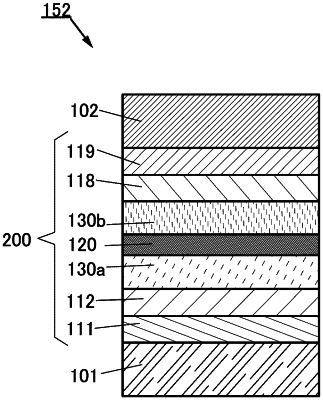| CPC H10K 50/121 (2023.02) [G06F 3/041 (2013.01); H10K 50/13 (2023.02); H10K 2101/30 (2023.02); H10K 2101/90 (2023.02)] | 28 Claims |

|
1. A light-emitting device comprising:
a first electrode;
a second electrode over the first electrode;
a first light-emitting layer between the first electrode and the second electrode, the first light-emitting layer comprising a first material and a second material; and
a second light-emitting layer between the first electrode and the second electrode, the second light-emitting layer comprising a third material and a fourth material,
wherein light emission obtained from the first light-emitting layer comprises an emission from the second material,
wherein the first material is capable of converting triplet excitation energy into light emission,
wherein the second material is capable of converting singlet excitation energy into light emission and includes a luminophore and five or more protecting groups,
wherein the luminophore is one of a condensed aromatic ring and a condensed heteroaromatic ring,
wherein each of the five or more protecting groups independently includes any one of an alkyl group having 1 to 10 carbon atoms, a substituted or unsubstituted cycloalkyl group having 3 to 10 carbon atoms, and a trialkylsilyl group having 3 to 12 carbon atoms,
wherein the fourth material is capable of converting triplet excitation energy into light emission, and
wherein an emission spectrum of the third material overlaps with an absorption band having a longest wavelength in an absorption spectrum of the fourth material.
|